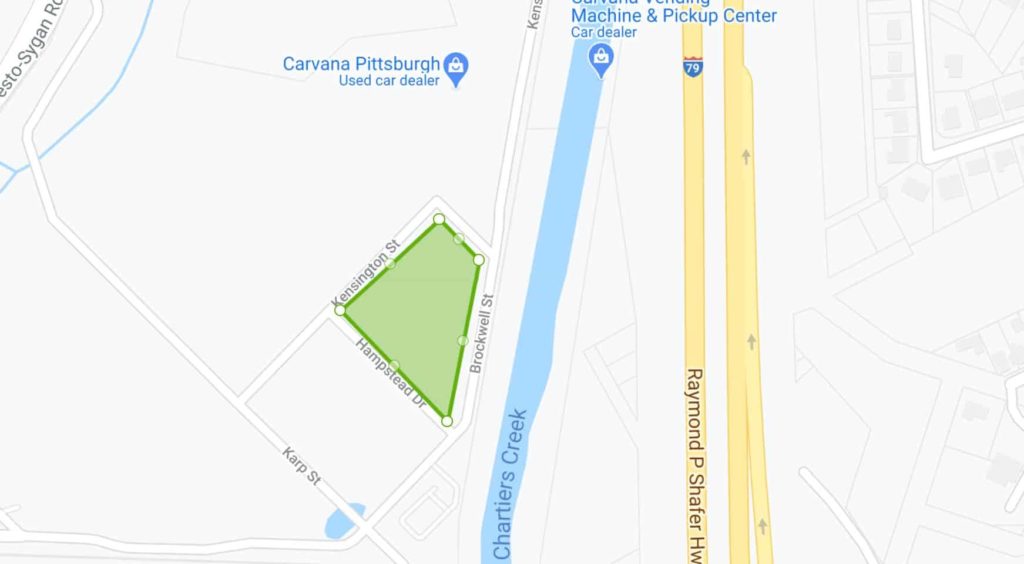What’s the Difference Between Geotargeting and Geofencing?
Geotargeting and geofencing have the same idea in mind: giving advertisers the power to control geographically where their digital advertisements will be shown. The difference between the two is that geotargeting is a more broad targeting method whereas geofencing gets much more granular and precise. Both are proven contributors to successful paid advertising campaigns, it’s up to the advertiser to decide which method is right for their needs.
Geotargeting In Digital Marketing Campaigns
Advertising to the right audience is crucial in running a successful paid advertising campaign. Advertising to the wrong audience is like paying someone to walk around and hand out dog walking flyers to people who don’t own dogs. One way marketers can avoid advertising to the wrong audience is through geotargeting. Geotargeting is exactly what it sounds like; targeting an audience based on their geography.
Let’s use the example of Doug the Dog Walker. If Doug lives and operates his local business in Downtown Pittsburgh, he isn’t going to want to advertise his dog walking business to people in Ohio. By including radiuses (normally a mile or more), zip codes, regions, states, or even countries when building a campaign, Doug can control where in the world his ads will be shown. This will help guarantee that Doug’s advertising dollars will be spent attracting dog owners in Downtown Pittsburgh.
Most platforms allow geotargeting in 2 ways:
- The geographic area the person physically is at that time (or commonly are located).
- The geographic area the person is searching about or showing interest in.
As a further safeguard geotargeting not only allows you to identify what IS in target, but explicitly what IS NOT in the geotarget, through negative geotargeting or blacklisting certain geographies.
The easiest way to look at geotargeting is less like targeting and more of the confines of where these ads will show. If you’re within the allotted geo, you will see the ad. If you are outside of the allotted geo, you will not see the ad.
Geofencing In Digital Marketing Campaigns
Geofencing takes geotargeting a couple steps further. Geofencing is the use of smaller geographical radius, direct storefront or parking lot targeting, household identification, or free-ranging shapes drawn over locations on the map or particular area that when paired with GPS, Wifi or Bluetooth, will trigger an advertisement to a potential customer within the radius.

Geofencing: Free Ranging Shape Example
Geofencing allows for targeting in two ways – either while in the fence or after they leave the fence. In-the-fence geofencing is similar to geotargeting (just more granular in targeting) in that it sets the confines of where a user has to be to receive an ad. If the user is in the fence, then they can receive an ad. If they are outside of the fence, then they won’t. Geofencing can also be used as a reactive measure, in a way to target after they leave the fence. This way geofencing doesn’t set up the parameters that the person must be within at the time of seeing an ad, unlike geofencing in-the-fence or geotargeting. This after-the-fence geofencing is just a targeting tactic then and can be used with geotargeting.
It is a very useful tool in 3 particular instances:
Geofencing Near Your Business
Let’s imagine that Doug the dog walker opened a dog grooming business half a mile from a pet care store and he sets a geofence parameter around his storefront. While people are in the pet care store using an app to find the best god food deals, an ad of Doug’s can pop up directly on the app for 50% off their first grooming appointment.
This is a result of potential customers being within the geofence using an app that the advertising platform has ad inventory to and determining through their mobile device usage, whether through Bluetooth, Wifi or GPS that they’re within that fence. These customers will now be incentivized to drop their furry friend off for a grooming appointment the next time they run errands.
It’s important to use geofencing strategically in which the advertiser is targeting a specific location based on the traits of people entering it. Unlike geotargeting or mass media, placing a “fence” around a location that everyone goes to, may not yield a positive outcome. Take for instance Doug geofencing Heinz Field during a busy football game. There is such a wide range and diverse grouping of people there that there may be a few dog owners in that area, yet there may be a lot more non-dog owning spectators in the crowd, all of which Doug is targeting. Good use of Doug’s advertising budget? I wouldn’t think so.
Geofencing Near A Competitor
In this instance, imagine there is a dog grooming business on the other side of town from Doug’s grooming salon. Doug can put a geofence radius around his competitor’s storefront to redirect potential customers who are on an app looking at grooming services to take advantage of Doug’s 50% off coupon rather than going to the competitor nearby.
Competitor geofencing is also referred to as “geo-conquesting”. This strategy makes it possible for an advertiser to target people who frequently visit a competitor or are often near a competitor. It is a great way to go one step further in attracting potential customers and steering them towards your business.
Geofencing Near A Place Of Interest
Another beneficial feature of geofencing includes targeting an area of interest. Doug can go beyond implementing radiuses around his or a competitor’s storefront by also targeting a dog park in the town one over. While people are enjoying themselves with their pets in the park, once they check an app or go online while connected to Wifi or Bluetooth, Doug’s 50% off your first grooming appointment coupon will once again appear. This is a good tool to reach a relevant audience likely to convert.
Read more on how geofence targeting is only one piece in the audience modelling puzzle with “How Corkboard Concepts Creates More Effective Targeting Through Audience Modelling”.





